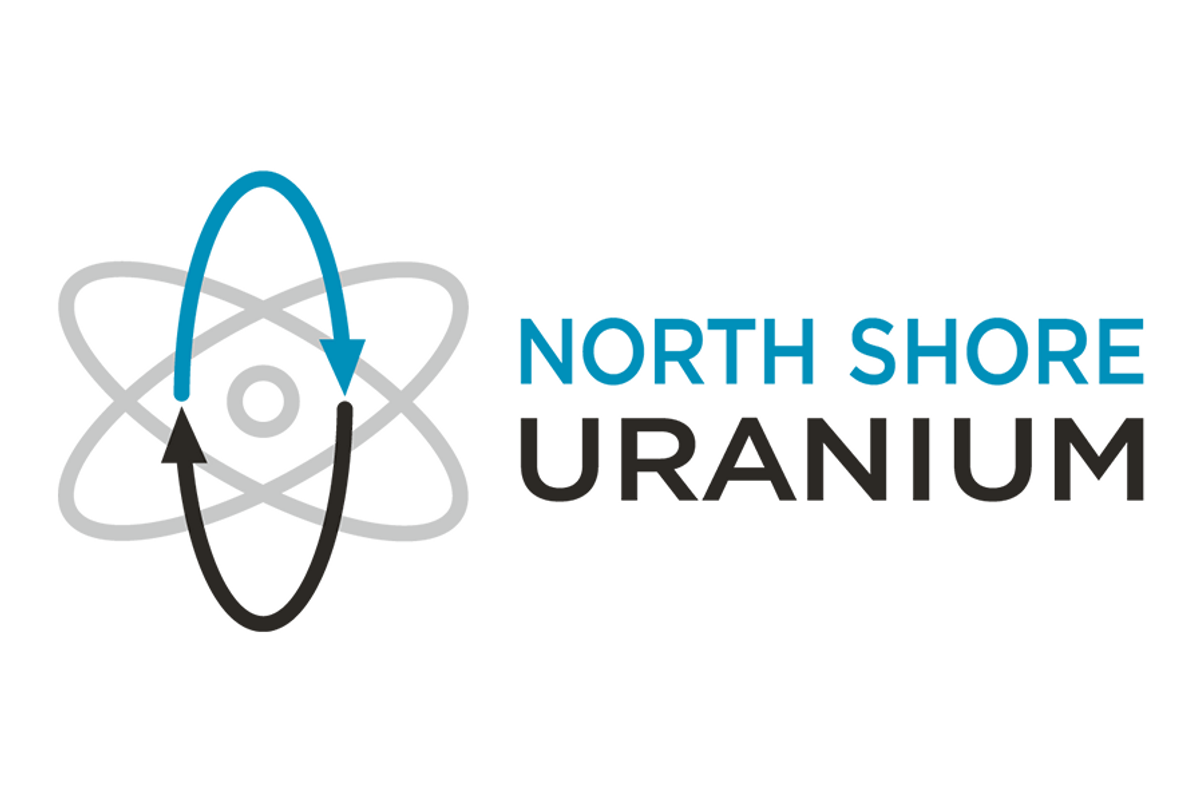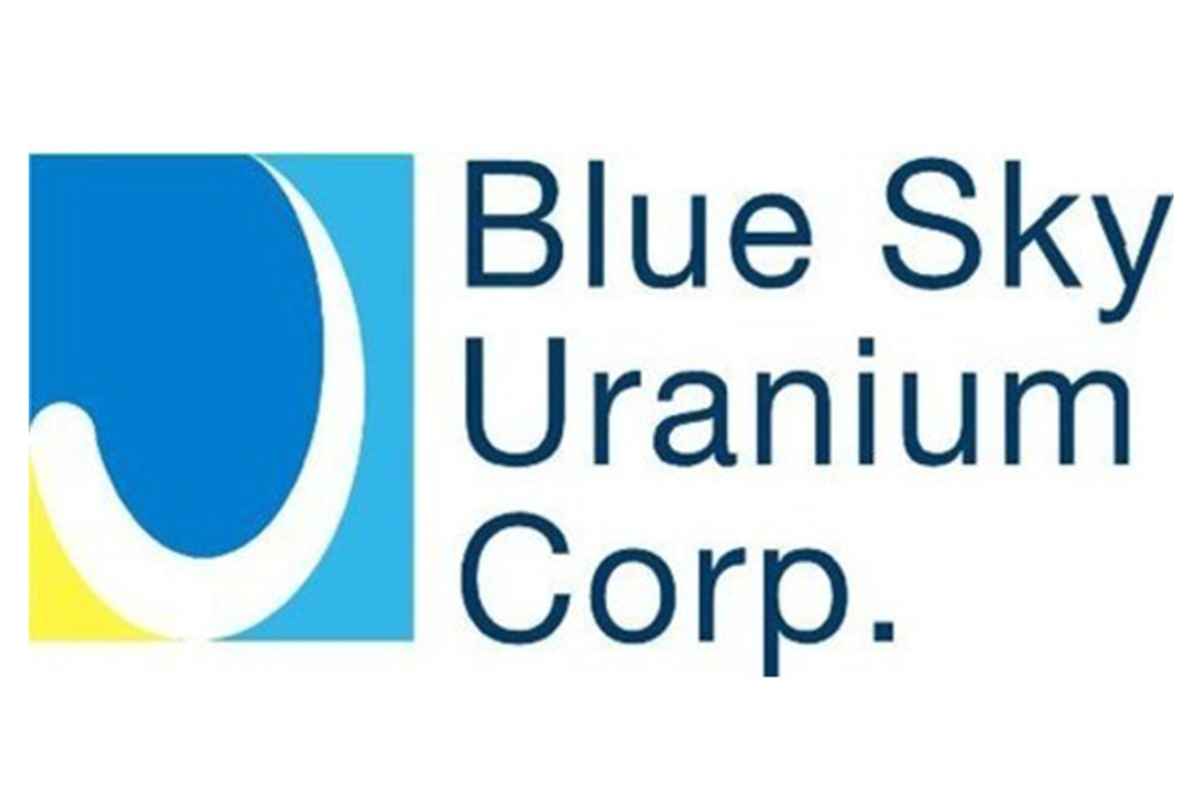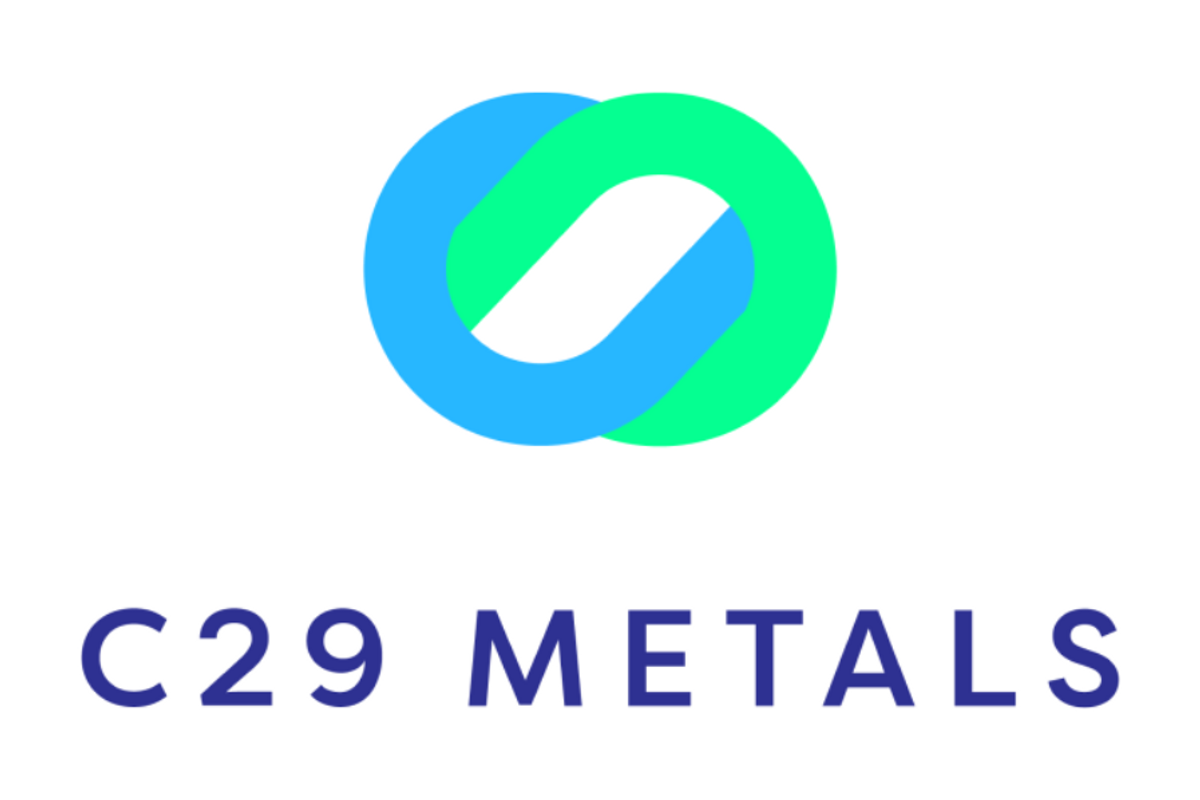
August 07, 2024
C29 Metals receives Category 4 exploration works approval, strong local support, and a Social Support Agreement signed. Exploration Approvals Advancing.
C29 Metals Limited (“C29” or the “Company”) is pleased to announce that it has received Category four (4) exploration approval enabling the immediate commencement of tenement wide, geophysical, field mapping and soil sampling programs at its Ulytau Uranium project immediately. The Company’s geology team will immediately establish base of operations at the nearby village of Aksuyek where C29 enjoys strong community support.
HIGHLIGHTS
- C29 has received Category four (4) exploration works approval enabling the immediate commencement of geophysical & soil sampling programs at its Ulytau Uranium project.
- The Category two (2) drilling approval process is at an advanced stage and is on track, C29 anticipates drilling approval shortly.
- C29’s Geology team will commence site wide mapping and soil sampling immediately. The geology team will be utilising a handheld XRF unit in the field providing real time geological information to the team.
- C29 has identified a laboratory that meets all international standards and can provide a sample turnaround time of approximately four (4) weeks.
C29 Metals Managing Director, Mr Shannon Green, commented:
“It is very exciting to have the Category four (4) exploration approval granted enabling our geology team to immediately commence field works in preparation for drilling. This once again demonstrates the positive operating environment in Kazakhstan and the support the company is enjoying”.
Initial Geological Work Program
The initial geological program will undertake tenement wide mapping and soil sampling focusing on verification of historical shallow high-grade results and identify the extent of the surface outcropping and shallow high-grade uranium across the tenement.
The geology team will be utilising a handheld XRF unit in the field providing real time geological information to the team and valuable geological data that will assist with the Initial drill hole targeting and methodology.
Figure 1 below shows the interpreted mineralised uranium trend1 and location for initial Category 4 exploration works.

Click here for the full ASX Release
This article includes content from C29 Metals Limited, licensed for the purpose of publishing on Investing News Australia. This article does not constitute financial product advice. It is your responsibility to perform proper due diligence before acting upon any information provided here. Please refer to our full disclaimer here.
C29:AU

Sign up to get your FREE
C29 Metals Investor Kit
and hear about exciting investment opportunities.
- Corporate info
- Insights
- Growth strategies
- Upcoming projects
GET YOUR FREE INVESTOR KIT
The Conversation (0)
15 August 2024
C29 Metals
Investor Insight
A high-grade uranium explorer looking to grow its strategic footprint in southern Kazakhstan, C29 Metals is well-positioned to take advantage of a rapidly expanding uranium market and provide significant shareholder value.
Overview
C29 Metals (ASX:C29) is a Perth, Australia-based uranium mineral exploration company with assets in Kazakhstan. The company’s recently acquired flagship asset, the Ulytau uranium project, represents a “transformative acquisition” that places C29 Metals in a strategic position to leverage a rapidly growing global uranium market and Kazakhstan’s rich uranium resource and established mining infrastructure.
The Ulytau project is located near Lake Balkhash in South Kazakhstan and situated 15 km south of the Bota-Burum mine, one of the largest uranium deposits mined in the former Soviet Union.
Kazakhstan is considered a top mining country for the following reasons:
- It has a well-developed transportation infrastructure and abundant energy resources, ensuring a stable power supply for mining operations.
- It was ranked 25th by the World Bank for” ease of doing business.”
- As the world’s top uranium producer, Kazakhstan represents 43 percent of the global market.
- It is the lowest-cost producer, globally.
- It holds 12 percent of the world’s uranium resources.
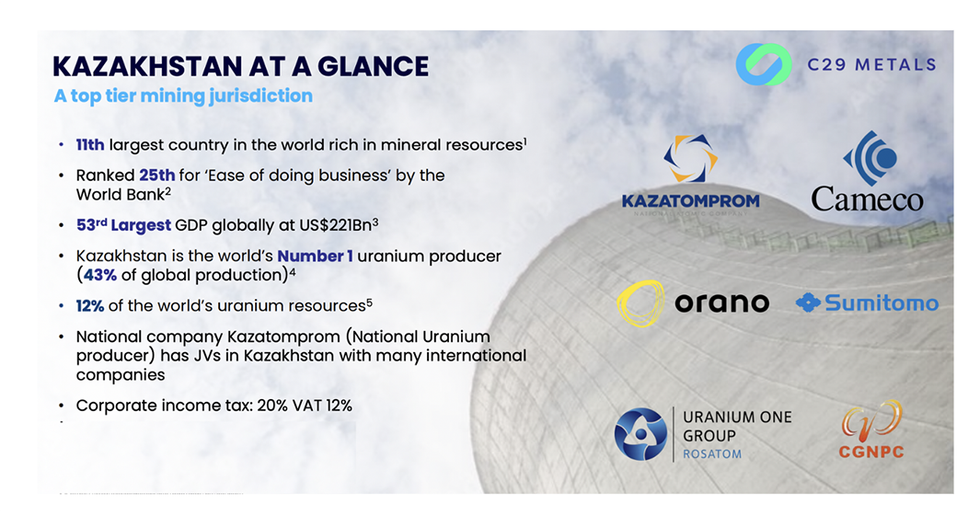
Kazakhstan’s strategic location in Central Asia also provides easy access to major markets in Europe, China and Russia, and the flagship Ulytau uranium project is located 3.5 hours from the country’s largest city of Almaty.
The local village of Aksuyek has a population of ~700 people and will support C29 Metals’ exploration efforts in the near-to-mid-term, providing a base of operations and support services.
The uranium market is expected to grow over the next 10 years, with the World Nuclear Association projecting a 28 percent increase in uranium demand from 2023 to 2030. As electricity demand potentially increases by about 50 percent by 2040, there is significant opportunity for increasing the global nuclear energy capacity, especially as the world continues to pursue its clean energy agenda and a low-carbon economy.
Company Highlights
- Focused on uranium exploration in the top uranium-producing jurisdiction of Kazakhstan, with a newly granted tenement and new license applications in progress (252 sq km) and strong community support from local neighboring village members.
- Flagship Asset: The Ulytau project, located in southern Kazakhstan, 15 km south of Bota-Burum, one of the largest Soviet-era uranium mines in the heart of one of the world’s most prolific uranium-producing regions.
- Experienced Leadership: Seasoned board and management team led by Shannon Green, an executive with over 25 years of experience.
- Positive Market Outlook: Demand for uranium is expected to increase by 28 percent by 2030, and 51 percent by 2040.
Key Projects
Ulytau Uranium Project

Figure 2 – Ulytau project location in relation to other Kazakhstan Uranium mines.
The Ulytau Project is located in the Almaty Region of Southern Kazakhstan, approximately 15 km southwest of the Bota-Burum mine, which is one of the largest uranium deposits mined in the former Soviet Union.
Exploration for uranium has been carried out in the area since 1953. Uranium production at the Bota-Burum mine, next to the village of Aksuyek, commenced in 1956 and continued until 1991. Total mined reserves of Bota-Burum are quoted at 20,000 tonnes of uranium (44 million pounds).
C29 Metals has lodged two (2) new license applications with the Ministry of Natural Resources. The licenses are designed to cover ~18 km of additional prospective strike.
The Southern application, the largest of the two (2) applications, was granted on the 1 August 2024 and is contiguous with the Ulytau license area and sits immediately to the South and East of the Ulytau Uranium project tenement boundaries. The Southern application area is ~213 km2. The Northen tenements licence was granted on September 3, 2024.
The Southern tenement is interpreted as having a similar mineralised trend to that of the existing Ulytau Project area (refer to ASX announcement “License Applications Lodged around Ulytau Uranium Project” dated 24 July 2024 and the further clarification on 25 July 2024).
The Northern tenements, meanwhile, sits to the north of the Ulytau uranium project tenement and immediately north of the historic Bota Burum uranium mine. The Northern licence application area is ~39 sq km.
C29 Metals is commencing exploration work at Ulytau, following receipt of a category 4 exploration approval on August 7, 2024, which will include geophysical, field mapping and soil sampling programs.

Figure 3 – The interpreted mineralised Uranium trend with the newly granted southern license and northern application
Local Community Support
The company has held two community consultation days at the local community of Aksuyek, with a population of about 700 people, located roughly 20 km from the Ulytau project area. The community of Aksuyek have shown their strong support for the company’s planned exploration programs. Aksuyek will provide a base of operations for the work programs and can provide many of the required support services to the company.
A social support agreement was signed on July 9, 2024, with the district government providing the framework for the company to assist the village of Aksuyek with projects aligned to the social development of the community. This very important agreement demonstrates the commitment by both parties to work together to ensure mutually beneficial outcomes are sustainably delivered into the future.
Board and Management
Shannon Green - Managing Director
Shannon Green is an experienced mining executive and company director with over 25 years of corporate, resource development and mining operations experience. With extensive experience working in Africa and Australia, Green has managed significant projects, from greenfields exploration through feasibility through construction, into operation. He has held senior leadership roles within Australia in uranium development, as well as iron ore and gold mining operations.
David Lees - Non-executive Chairman
David Lees has over 20 years’ experience in the Australian financial services industry. He started as a stockbroker and subsequently moved into investment and funds management, providing him with extensive experience in capital markets with a diverse skill set covering investment management, business development and corporate governance. He holds a Bachelor of Economics from Murdoch University and a post graduate diploma in Applied Finance and Investment.
Jamie Myers - Non-executive Director
Jamie Myers has over 15 years in equities dealing and corporate advisory experience. He is experienced in leading transactions, including pre-IPOs, IPOs and secondary market equity raising across small and mid-cap companies. He is also the founder and managing director of boutique advisory firm Molo Capital.
Ailsa Osborne - CFO and Company Secretary
Ailsa Osborne has more than 20 years of experience as a financial professional, including more than 15 years in the resource industry in Australia and internationally. Ms Osborne has held CFO and company secretary roles with a number of ASX-listed companies. She has held senior finance roles in several listed companies operating in Australia and internationally, including in South America, Indonesia and Africa.
Keep reading...Show less
Uranium exploration in top producing, mining-friendly jurisdiction of Kazakhstan
30 April
Quarterly Activities/Appendix 5B Cash Flow Report
17 March
NAE Commences Maiden RC Drilling at the Wagyu Gold Project, Pilbara WA
New Age Exploration (ASX: NAE) (NAE or the Company) is pleased to announce that Strike Drilling has mobilised to site with a Schramm T450 rig, and Reverse Circulation (RC) drilling has begun as of Sunday, 16 March 2025.
HIGHLIGHTS
- Maiden Reverse Circulation (RC) drill program of 3,000m has commenced at the Wagyu Gold Project, Pilbara WA
- Drilling Contractor, Strike Drilling, to take 50% of payment in equity, demonstrating confidence in the project’s potential
- Program aims to extend gold mineralisation strike and depth, following high-grade intercepts up to 15.6g/t gold in recent Phase 2 Air Core drilling
- The Wagyu Project is located in the Central Pilbara’s fast-emerging gold region, adjoining De Grey Mining (ASX:DEG) tenure containing its ~11.2Moz1 Hemi Gold deposit
The Wagyu Gold Project, located within a fast-emerging gold mineralised corridor, represents a highly prospective Gold opportunity ~9km within the same mineralised trend as De Grey Mining’s (ASX:DEG) Hemi Gold Deposit containing ~11.2 Moz1 (refer to Figure 1) in the Central Pilbara.
NAE Executive Director Joshua Wellisch commented:
"The commencement of RC drilling marks an important milestone in advancing the Wagyu Gold Project. The support of Strike Drilling, who has agreed to take 50% of their payment in equity, is a strong endorsement of the project’s potential. We are eager to test these high-priority targets and further define the extent of gold mineralisation.”
This 3,000m RC drill program is the next step in NAE’s systematic exploration strategy at Wagyu, following promising results from recent geophysical surveys (refer ASX Announcement 11 March 2025) and Phase 2 Air Core (AC) drilling, which confirmed multiple high-grade gold intercepts including 15.6g/t gold over 1m (refer ASX Announcement 17 February 2025). The program will test five high-priority gravity targets on the eastern side of the project area, with particular emphasis on Gravity Targets 1 & 10 (Figure 2), following up on the significant gold mineralisation (>1g/t) identified in the AC drilling (Figure 3).
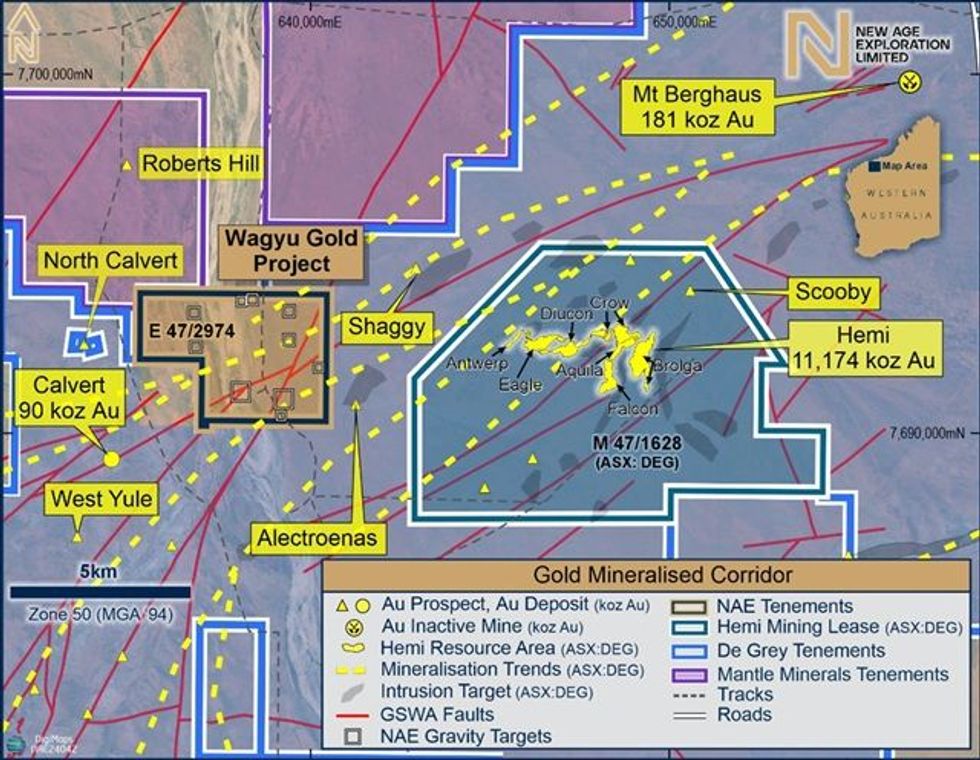
The Hemi Gold Mineral Resource was last updated by De Grey Mining on 14 November 20241. The estimate is for 264Mt @ 1.3g/t Au for 11.2Moz, which can be broken down into 13Mt @ 1.4g/t for 0.6Moz, 149Mt @ 1.3g/t Au Indicated for 6.3 Moz, and 103Mt @ 1.3g/t Au for 4.3 Moz Inferred.
NAE confirms that it is not aware of any new information or data that materially affects the information included in De Grey’s reported Mineral Resources referenced in this market announcement. To NAE’s full knowledge, all material assumptions and technical parameters underpinning the estimates in the relevant market announcements continue to apply and have not materially changed.
The previous AC drilling drilled to the top of fresh rock only, and this RC program will test for primary mineralisation in fresh rock below and adjacent to the oxide mineralisation identified in late 2024. RC drilling is also intended to outline better the boundaries, nature, and extent of mineralised intrusions identified from geophysics and AC drilling.
The RC drilling campaign is scheduled for completion within four weeks, with assay results expected between late April and May 2025.
Click here for the full ASX Release
This article includes content from New Age Exploration Limited, licensed for the purpose of publishing on Investing News Australia. This article does not constitute financial product advice. It is your responsibility to perform proper due diligence before acting upon any information provided here. Please refer to our full disclaimer here.
Keep reading...Show less
26 June
John Ciampaglia: Uranium Turnaround? Spot Price Pop, Stocks and SPUT Raise
John Ciampaglia, CEO of Sprott Asset Management, discusses uranium supply, demand and pricing, also sharing details on the Sprott Physical Uranium Trust's (TSX:U.U,OTCQX:SRUUF) recently closed US$200 million bought-deal financing.
"It's clearly acted as a very positive catalyst — the spot price has popped, a lot of the equities have popped on this," he said about the agreement.
Don't forget to follow us @INN_Resource for real-time updates!
Securities Disclosure: I, Charlotte McLeod, hold no direct investment interest in any company mentioned in this article.
Keep reading...Show less
25 June
North Shore Announces Binding Term Sheet for Rio Puerco Uranium Project in New Mexico, USA
North Shore Uranium Ltd. (TSXV:NSU)("North Shore" or the "Company") is pleased to announce that on June 23, 2025, it signed a binding term sheet (the "Term Sheet") with Resurrection Mining LLC ("Resurrection"), an arm's length party, to acquire up to 87.5% of the Rio Puerco uranium project ("Rio Puerco" or the "Project") in northwestern New Mexico (the "Transaction").
TRANSACTION AND PROJECT HIGHLIGHTS
- Historical resource estimate of 6.0 million tonnes at an average grade of 0.09% eU 3 O 8 for 11.4 million lbs. of U 3 O 8 reported in 2009
- Substantial historical dataset to guide and optimize future exploration programs
- Preliminary review of historical data suggests the potential for In-Situ Recovery ("ISR") mining, the lowest cost method for producing uranium
- Located in the Grants Uranium District, the largest producer of uranium in the United States and near two significant active uranium projects, Marquez-Juan Tafoya (Anfield Energy Inc.) and Cebolleta (Premier American Uranium Inc.)
- Strong US government support for nuclear power and uranium mining projects and a stated objective to reduce reliance on foreign nuclear fuel
- Executive Orders issued by President Trump in late May 2025 include a call for quadrupling US nuclear capacity by 2050, accelerating new reactor development, strengthening the US nuclear fuel supply chain and reforming the US regulatory environment
- Staged earn-in structure allows the Company to optimize exploration programs
- Would provide North Shore with uranium exposure in two North American jurisdictions, the Athabasca Basin in Saskatchewan, Canada and the western USA
Brooke Clements, President and CEO of North Shore stated: "The Rio Puerco project in New Mexico offers us exposure to a uranium project in the USA with excellent upside and signficant historical exploration data including a historical resource estimate. The US government has recently enacted policies designed to accelerate nuclear power and uranium mining activity in the country. In the 1970s, Kerr-McGee commenced mine construction at Rio Puerco, but activity was halted after a short trial-mining phase due to low uranium prices. The Project offers a great opportunity to confirm and expand upon previous work through drilling, modern 3-D modelling and continued assessment of the ISR potential. On completion of the Transaction with Resurrection, we will have uranium exposure in two North American jurisdictions that have seen signficant uranium production, the Grants Uranium District and the Athabasca Basin, at a time when future supply-demand fundamentals look great for the industry."
Rio Puerco is located at the eastern end of the Grants Uranium District, approximately 60 kilometres northwest of Albuquerque, New Mexico (Figure 1). Mines that operated between 1950 and 2002 contributed to make the Grants Uranium District the leading historical uranium producing district in the United States.
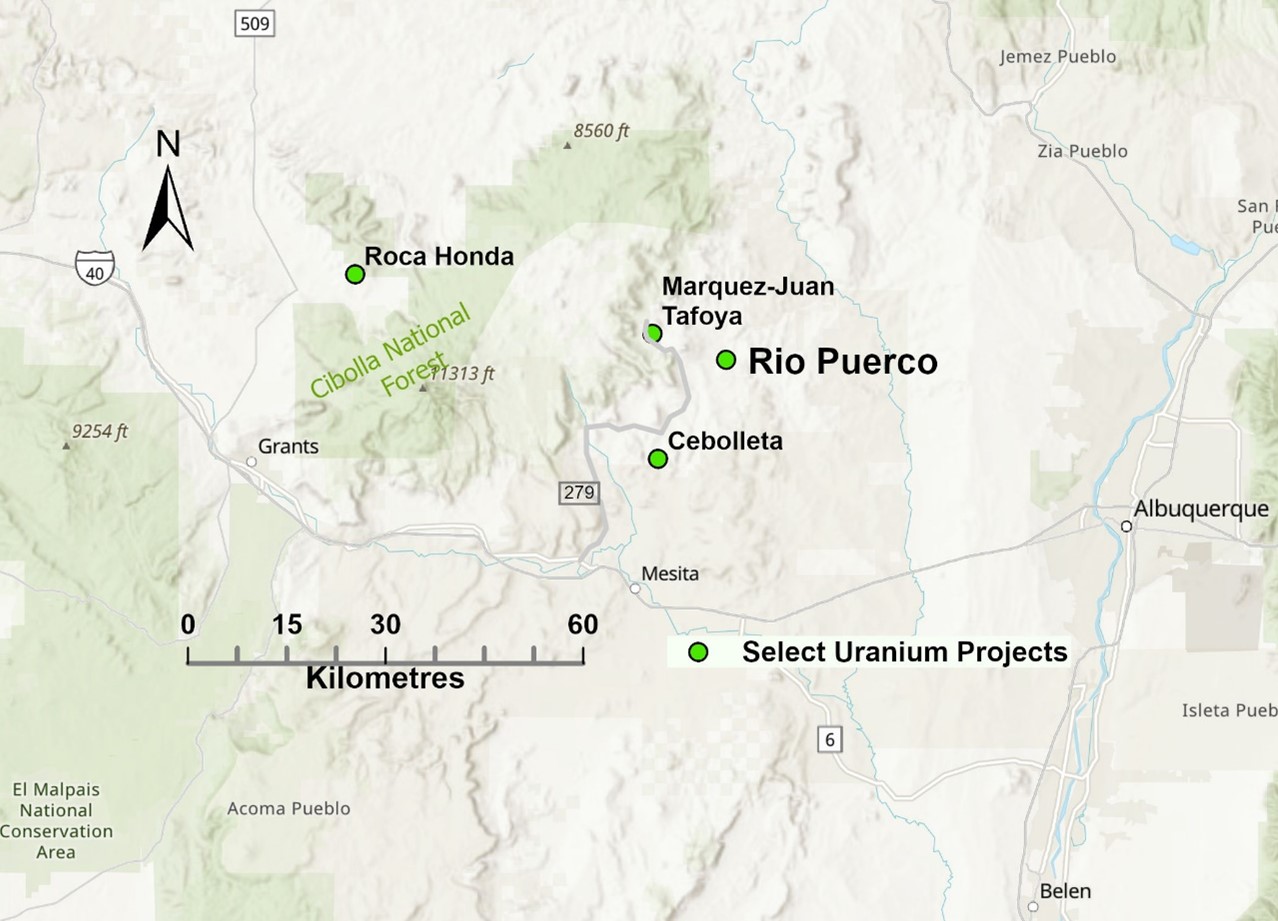
Figure 1: Rio Puerco Location Map, New Mexico. Roca Honda (Energy Fuels), Marquez-Juan Tafoya (Anfield Energy) and Cebolleta (Premier American Uranium) are advanced exploration/development stage uranium projects.
RIO PUERCO PROJECT SUMMARY
Rio Puerco consists of 37 Bureau of Land Management mining claims and significant historic exploration and mining data as well as the rights to a water well. Historical exploration and development work by Kerr-McGee Corporation ( "Kerr McGee" ) in the 1960s and 1970s, and geologic and resource modelling work completed by two Australian companies in 2009 and 2011 validate the potential for Rio Puerco to host a significant uranium resource.
Uranium was first discovered at Rio Puerco in 1968. The claims covering the discovery were ultimately optioned to Kerr-McGee who drilled over 1,000 holes. Based on the results of that work, they began the development of the Rio Puerco Mine in the 1970s. The uranium mineralization is hosted in sandstone of the Jurassic-aged Morrison Formation, host to almost all of the significant uranium deposits in the Grants Uranium District. The mine was intended to be a room and pillar underground mine but was never put into production. Activity ceased after a short trial mining phase likely due to low uranium prices at the time. The underground mine infrastructure included a 260m vertical shaft, ventilation shafts, mining adits and support buildings. The mining shaft remains at the site and road access to the site is excellent.
In 2009, Monaro Mining NL ( "Monaro" ) commissioned an independent geological review and resource estimate for Rio Puerco using exploration data generated by Kerr-McGee in the 1960s and 1970s. The data used for the resource estimate consisted of historical maps and data from 764 drill holes including downhole gamma-ray data converted to percent equivalent U 3 O 8 (e U 3 O 8 ), geological logs and drillhole survey data. They reported a JORC 2004-compliant inferred resource of 6.0 million tonnes at an average grade of 0.09% eU 3 O 8 using a cutoff grade of 0.03% eU 3 O 8 for 11.4 million lbs. of contained U 3 O 8 1 (the " Historic Resource" ). JORC is the Australian Joint Ore Reserves Committee, a professional code of practice that sets minimum standards for public reporting of Mineral Resources.
In 2011, Australian-American Mining Corporation Ltd. commissioned a technical report on Rio Puerco. This most recent report validated and confirmed the Historic Resource 2 .
No significant exploration or development work has occurred at Rio Puerco since the 1970s.
HISTORICAL RESOURCE ESTIMATES FOR THE RIO PUERCO PROJECT
The historical resource outlined in this news release has not been verified and should not be relied upon. It is a historical estimate and not current and does not comply with Canadian NI 43-101 guidelines for the reporting of Mineral Resources. A qualified person has not verified the historical resource on behalf of the Company and North Shore has completed no work programs at Rio Puerco. Though not current, the Company views the historical resource estimates as reliable and sufficient to justify the initiation of work programs aimed at validating and potentially expanding upon the estimates. There is no guarantee that the work programs envisioned by North Shore will ultimately result in the definition of NI 43-101 compliant resources.
RIO PUERCO TERM SHEET
Completion of the Transaction is contingent on North Shore completing satisfactory due diligence, execution of a definitive agreement, completion of a minimum $750,000 financing by North Shore and approval by the TSX Venture Exchange (the "Exchange" ). A finder's fee may be payable to an arms-length third party upon completion of the Transaction. The following highlights key terms of the Term Sheet executed by North Shore and Resurrection, all currency references are in Canadian dollars:
- Milestone 1: upon completion of the Transaction, a $125,000 cash payment and issuance of 9.99% of the issued and outstanding shares of the Company, post-financing.
- Milestone 2, to earn a 40% interest in the Project: on or before 18 months after completion of the Transaction, a $250,000 payment in cash or common shares, at the option of North Shore, and $750,000 in exploration expenditures.
- Milestone 3, to earn an aggregate 65% interest in the Project: on or before 36 months after completion of the Transaction, a $375,000 payment in cash or common shares, at the option of North Shore, and $1,000,000 in additional exploration expenditures.
- Milestone 4, to earn an aggregate 87.5% interest in the Project: on or before 60 months after completion of the Transaction, a $500,000 payment in cash or shares, at the option of North Shore, and $1,500,000 in additional exploration expenditures.
- North Shore may elect to not continue to sole-fund exploration expenditures at any time after earning a 40% interest in Rio Puerco at which time North Shore and Resurrection will enter into a joint venture agreement to govern the funding of Rio Puerco on a proportional basis.
- Carried interest: On completion of Milestone 4, North Shore will provide Resurrection with a 12.5% free-carried interest in the Project through completion of an NI 43-101-compliant Preliminary Economic Assessment at which time Resurrection can elect to form a participating joint venture or convert their interest into a 1.0% net smelter returns royalty. North Shore will be granted a right of first refusal on Resurrection's 12.5% interest.
- Bonus payments: For the 78 month period after completion of the Transaction, North Shore will pay Resurrection a $100,000 bonus for each million lbs. of uranium estimated in current resources defined by the Company above 5 million and up to 20 million lbs. in accordance with NI 43-101 standards, if and when such resources are defined.
- Other terms: Resurrection shall have a participation right to maintain its 9.99% interest in the common shares of North Shore for 5 years from completion of the Transaction and the right, but not the obligation, to appoint one nominee to the North Shore Board of Directors. All share issuances will be subject to Canadian and US securities law and will be priced in accordance with Exchange policies.
NEXT STEPS
After completion of the Transaction, North Shore will begin working towards defining the first NI 43-101-compliant uranium resource at Rio Puerco. The Company's initial work will aim to verify historical data and determine whether a resource can be defined in accordance with NI 43-101. First, geologic models of the previously defined deposit will be prepared using drill hole summary logs containing the interpreted zones of uranium mineralization. A number of confirmation drill holes are required to confirm the historic uranium grade and uranium disequilibrium, and for metallurgical testing. For the first program, 20 to 40 holes are contemplated, a combination of diamond core holes and rotary holes where a downhole gamma ray probe is used to determine uranium content. After the results of that program are received and interpreted, a comprehensive drilling plan would be developed aimed at defining a resource. Data from the drill programs will be used to further evaluate the amenability of ISR mining.
ABOUT NORTH SHORE
The nuclear power industry is in growth mode as more nuclear power will be required to meet the world's ambitious CO 2 emission-reduction goals and the needs of new power-intensive technologies like AI. In this environment, new discoveries of economic uranium deposits will be very valuable, especially in established uranium-producing jurisdictions like Saskatchewan and New Mexico. North Shore is well-positioned to become a major force in exploration for economic uranium deposits. The Company is working to achieve this goal by exploring its Falcon and West Bear properties at the eastern margin of the Athabasca Basin in Saskatchewan, expanding its exploration efforts to include the Grants Uranium District in New Mexico and by evaluating other quality opportunities in the United States and Canada to complement its portfolio of uranium properties. North Shore summarized its exploration efforts at its Falcon property in a May 27, 2025 , news release.
QUALIFIED PERSON
Mr. Brooke Clements, MSc, P.Geol., a Qualified Person as defined by National Instrument 43-101 - Standards of Disclosure for Mineral Projects and the President and CEO of North Shore, has reviewed and approved the scientific and technical disclosure in this press release.
ON BEHALF OF THE BOARD
Brooke Clements,
President, Chief Executive Officer and Director
For further information:
Please contact: Brooke Clements, President, Chief Executive Officer and Director
Telephone: 604.536.2711
Email: b.clements@northshoreuranium.com
www.northshoreuranium.com
Neither the TSX Venture Exchange nor its Regulation Services Provider (as that term is defined in the policies of the TSX Venture Exchange) accepts responsibility for the adequacy or accuracy of this release.
Forward-Looking Statements
This news release contains forward-looking statements that are based on the Company's current expectations and estimates. Forward-looking statements are frequently characterized by words such as "plan", "project", "appear", "interpret", "coincident", "potential", "confirm", "suggest", "evaluate", "encourage", "likely", "anomaly", "continuous" and variations of these words as well as other similar words or statements that certain events or conditions "could", "may", "should", "would" or "will" occur. Such forward-looking statements involve known and unknown risks, uncertainties and other factors that could cause actual events or results to differ materially from estimated or anticipated events or results implied or expressed in such forward-looking statements. Such factors include, among others: the completion and expected terms of the Transaction, the parties' abilities to meet the closing conditions of the Transaction, the number of securities to be issued by the Company in connection with the Transaction, receipt of all necessary approvals for the completion of the Transaction, the completion of satisfactory due diligence, execution of a definitive agreement, completion of a minimum $750,000 or any financing by the Company, and the Company's ability to meet the Milestones, make the bonus payments or meet other terms of the Transaction; the highly speculative nature of the Transaction given the early-stage nature of Rio Puerco; the actual results of current and planned exploration activities including the potential for the definition of a mineral deposit of potential economic value at the Company's Falcon property in Saskatchewan; that drilling results, geophysical survey results and/or interpretations thereof are defining potentially mineralized corridors; results from future exploration programs including drilling; interpretation and meaning of completed and future geophysical surveys; conclusions of future economic evaluations; changes in project parameters as plans to continue to be refined; possible variations in grades of mineralization and/or future actual recovery rates; accidents, labour disputes and other risks of the mining industry; the availability of sufficient funding on terms acceptable to the Company to complete the planned work programs; delays in obtaining governmental approvals or financing; and fluctuations in metal prices. There may be other factors that cause actions, events or results not to be as anticipated, estimated, or intended. Any forward-looking statement speaks only as of the date on which it is made and, except as may be required by applicable securities laws, the Company disclaims any intent or obligation to update any forward-looking statement, whether as a result of new information, future events, or results or otherwise. Forward-looking statements are not guarantees of future performance and accordingly undue reliance should not be put on such statements due to the inherent uncertainty therein. Any forward-looking statements contained in this news release are expressly qualified in their entirety by this cautionary statement.
1 Monaro Mining NL, 2009, 250% increase in uranium resource inventory at Rio Puerco deposit, New Mexico USA: Monaro Mining NL ASX news release: (link)
2 Boyer, D. and Ostensoe, E., 2011, NI 43-101 technical report, Rio Puerco deposit, Sandoval county, New Mexico, USA: Independent report commissioned by Australian-American Mining Corporation Ltd.: (link)
Keep reading...Show less
25 June
Blue Sky Uranium Closes 2nd Tranche of Non-Brokered Private Placement
Blue Sky Uranium Corp. (TSXV: BSK) (FSE: MAL2) (OTC: BKUCF), ("Blue Sky" or the "Company") announces that it has closed a second tranche of the private placement through the issuance of 6,828,300 units of the Company (each, a "Unit") at a price of $0.06 per Unit for aggregate gross proceeds of $409,698 (the "Offering"). To date the Company has issued 27,361,633 Units for aggregate gross proceeds of $1,641,698.
Each Unit consists of one common share and one transferrable common share purchase warrant (a "Warrant"). Each Warrant will entitle the holder thereof to purchase one additional common share in the capital of the Company at $0.075 per share for three (3) years from the date of issue, expiring June 26, 2028.
The Company intends to use the proceeds of the Offering for general working capital.
Finder's fees of $4,108.86 are payable in cash on a portion of the private placement to parties at arm's length to the Company. In addition, 68,481 non-transferable finder's warrants are being issued (the "Finder'sWarrants"). Each Finder's Warrant entitles a finder to purchase one common share at a price of $0.06 per share for three (3) years from the date of issue, expiring on June 26, 2028.
Certain insiders of the Company participated in the Private Placement for $96,000 in Units. Such participation represents a related-party transaction under Multilateral Instrument 61-101 - Protection of Minority Security Holders in Special Transactions ("MI 61-101"), but the transaction is exempt from the formal valuation and minority shareholder approval requirements of MI 61-101 as neither the fair market value of the subject matter of the transaction, nor the consideration paid, exceed 25% of the Company's market capitalization.
This Offering is subject to regulatory approval and all securities to be issued pursuant to the Offering in this second tranche are subject to a four-month hold period under applicable Canadian securities laws expiring on October 26, 2025. The proceeds of the Offering will be used for general working capital.
The securities described herein have not been, and will not be, registered under the United States Securities Act of 1933, as amended (the "1933 Act") or any state securities laws, and accordingly, may not be offered or sold within the United States except in compliance with the registration requirements of the 1933 Act and applicable state securities requirements or pursuant to exemptions therefrom. This press release does not constitute an offer to sell or a solicitation to buy any securities in any jurisdiction.
About Blue Sky Uranium Corp.
Blue Sky Uranium Corp. is a leader in uranium discovery in Argentina. The Company's objective is to deliver exceptional returns to shareholders by rapidly advancing a portfolio of uranium deposits into low-cost producers, while respecting the environment, the communities, and the cultures in all the areas in which we work. Blue Sky's flagship Amarillo Grande Project was an in-house discovery of a new district that has the potential to be both a leading domestic supplier of uranium to the growing Argentine market and a new international market supplier. The Company's recently optioned Corcovo project has potential to host an in-situ recovery ("ISR") uranium deposit. The Company is a member of the Grosso Group, a resource management group that has pioneered exploration in Argentina since 1993.
ON BEHALF OF THE BOARD
"Nikolaos Cacos"
______________________________________
Nikolaos Cacos, President, CEO and Director
Neither TSX Venture Exchange nor its Regulation Services Provider (as that term is defined in policies of the TSX Venture Exchange) accepts responsibility for the adequacy or accuracy of this release.
Keep reading...Show less
19 June
Stallion Uranium: Positioned for Discovery in the World’s Premier Uranium District
Stallion Uranium (TSXV:STUD,OTCQB:STLNF) is a Canadian exploration company focused on unlocking new discoveries in the underexplored southwestern Athabasca Basin—an emerging frontier with exceptional geological potential. With more than 709,000 acres under control, Stallion holds one of the largest land positions among junior explorers in the region.
As global uranium demand accelerates—driven by over 900 reactors in operation, construction, or planning—Stallion is well-positioned to benefit from a growing supply gap. The Athabasca Basin, known for uranium grades up to 20 times the global average, remains the world’s premier jurisdiction for high-grade uranium exploration.
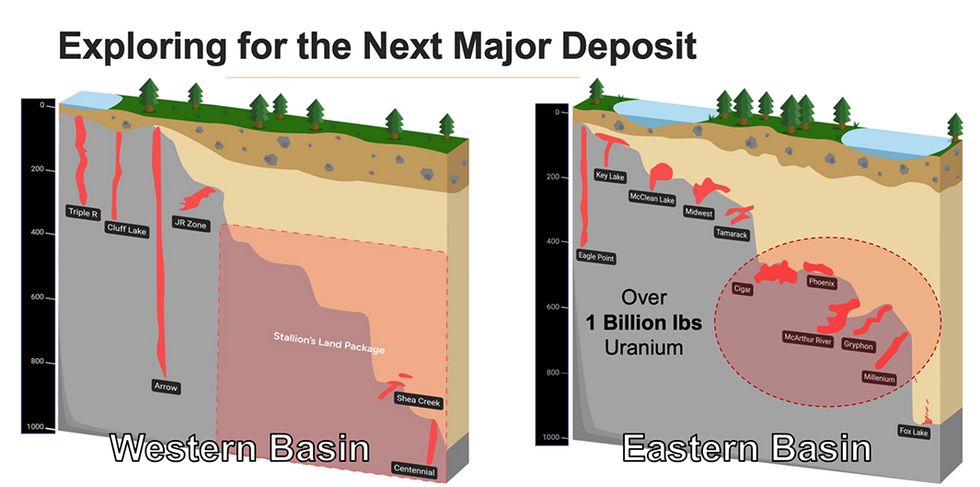
Stallion Uranium holds one of the largest underexplored land packages in the Athabasca Basin, covering more than 709,000 acres in the highly prospective southwestern region. Using advanced geophysics and a proven exploration framework, the company has systematically identified and ranked nine Tier-1 uranium targets across its portfolio. From these, three high-priority corridors have been selected for near-term exploration—each displaying the key geological and structural characteristics associated with major high-grade discoveries in the Basin.
Company Highlights
- Large-scale land position: 709,192 acres in the underexplored southwestern Athabasca Basin.
- World-class exploration address: Athabasca Basin accounts for ~15 percent of global uranium production and hosts the world’s highest-grade deposits.
- Tier-1 targets: Nine high-priority uranium targets identified; three prioritized for near-term drilling: Coyote, Fishhook and Lynx – each defined by advanced geophysics and ideal structural settings.
- Discovery-focused leadership: Team responsible for discoveries including NexGen’s Arrow and Hathor’s Roughrider.
- Strong market fundamentals: Global reactor count rising, while uranium supply remains structurally constrained.
- Near-term catalysts: Drilling at Coyote planned for H2 2025; expanded geophysics underway across portfolio.
This Stallion Uranium profile is part of a paid investor education campaign.*
Click here to connect with Stallion Uranium (TSXV:STUD) to receive an Investor Presentation
Keep reading...Show less
18 June
Stallion Uranium
Investor Insight
Stallion Uranium offers investors a rare opportunity to gain early exposure to a company with one of the largest underexplored land packages in the world’s premier uranium district – the Athabasca Basin – guided by a discovery team with a multi-billion-dollar track record.
Overview
Stallion Uranium (TSXV:STUD,OTCQB:STLNF) is a Canadian uranium exploration company positioned for discovery in the southwestern Athabasca Basin, a frontier zone that holds tremendous untapped geological potential. With a landholding of over 709,000 acres, Stallion controls one of the largest and least explored portfolios among junior explorers in the region.
The company is leveraging a surging uranium demand, driven by more than 900 reactors across the globe currently in operation, construction or planning stages. Amid a uranium supply shortage, the Athabasca Basin, with uranium grades up to 20 times the global averages, represents the best place in the world to find the next major high-grade discovery.
What sets Stallion apart is not just its land position, but the pedigree of its team. CEO Matthew Schwab was a key figure in the discovery of NexGen’s Arrow deposit, one of the most significant uranium finds of the past decade.
Over the past two years, Stallion has deployed airborne and ground geophysics across its land package, culminating in the identification of nine Tier-1 uranium targets. The top three – Coyote, Fishhook, and Lynx – have now been prioritized for drilling. Each of these targets exhibits the structural complexity, conductive trends, and gravity signatures characteristic of world-class deposits.
With drilling mobilization planned for H2 2025, a lean share structure, and one of the most technically credible teams in the sector, Stallion Uranium is well-positioned to create significant shareholder value through discovery.
Company Highlights
- Large-scale land position: 709,192 acres in the underexplored southwestern Athabasca Basin.
- World-class exploration address: Athabasca Basin accounts for ~15 percent of global uranium production and hosts the world’s highest-grade deposits.
- Tier-1 targets: Nine high-priority uranium targets identified; three prioritized for near-term drilling: Coyote, Fishhook and Lynx – each defined by advanced geophysics and ideal structural settings.
- Discovery-focused leadership: Team responsible for discoveries including NexGen’s Arrow and Hathor’s Roughrider.
- Strong market fundamentals: Global reactor count rising, while uranium supply remains structurally constrained.
- Near-term catalysts: Drilling at Coyote planned for H2 2025; expanded geophysics underway across portfolio.
Key Projects

Stallion Uranium controls one of the largest underexplored land packages in the Athabasca Basin, spanning over 709,000 acres in the highly prospective southwestern region. Leveraging advanced geophysical techniques and a proven exploration model, the company has systematically identified and ranked nine Tier-1 uranium targets across this vast portfolio. From this group, Stallion has prioritized three high-potential corridors for near-term exploration, each exhibiting the geological signatures and structural features consistent with major discoveries in the Basin.
Coyote Corridor
Located in the heart of Stallion’s southwestern Athabasca holdings, Coyote was first defined by a 2023 VTEM Plus survey, which revealed intersecting east-west conductors within a structurally complex zone. The Athabasca sandstone here is ~450 meters thick, a sweet spot for unconformity-style uranium systems. A Q1 2025 gravity survey revealed a large gravity low anomaly that mirrors the Arrow deposit's signature. Historical intersections just 12 km south reported up to 255 parts per million (ppm) uranium oxide (U₃O₈), reinforcing the region’s prospectivity. Coyote is currently undergoing 3D inversion modeling and is the company’s first drill target, with a campaign slated for late 2025.
Fishhook Corridor
This 18-km trend remains completely untested by drilling and was delineated using MobileMT surveys. Located along a mineralized corridor where historic assays 8 km south returned 0.139 percent U₃O₈, Fishhook is defined by merging conductive features and massive cross-structures, ideal for uranium fluid trapping. The convergence with the Five of Diamonds Trend underscores the corridor’s structural intensity. With similarities to productive zones in the Basin, Fishhook is poised for follow-up geophysics and potential drill targeting.

Stallion’s high priority targets.
Lynx Corridor
Adjacent to Orano’s Uchrich project, Lynx features a 13-km-long conductor hosted in a magnetic and gravity low, often indicative of the required lithological and alteration conditions. MobileMT data shows complex conductive and magnetic responses, further suggesting active hydrothermal systems. Entirely untested by drilling, Lynx represents a high-quality greenfield opportunity with plans for additional groundwork in 2025.
Management Team
Matthew Schwab – CEO and Director
A highly respected exploration geologist, Matthew Schwab played a leading role in the discovery of NexGen’s Arrow deposit and contributed to Hathor’s Roughrider (acquired by Rio Tinto for $654 million). He previously served as CEO of Kraken Energy.
Darren Slugoski – VP Exploration
Darren Slugoski is a geologist with a B.Sc. Honours from the University of Saskatchewan. He has over 10 years of Basin-focused experience, including involvement in the Spitfire and 2021 Gemini discoveries.
Knox Henderson – Head of IR
With 20+ years of capital markets experience, Knox Henderson is the former investor relations lead for Great Bear Resources (acquired by Kinross for $1.8 billion) and Kodiak Copper. His background is in trading and journalism.
Dong Shim – CFO
Dong Shim is a CPA in British Columbia and Illinois, with a deep background in auditing junior miners and supporting public listings on TSXV, CSE and OTC.
Kelly Pladson – Corporate Secretary
Kelly Pladson has been a regulatory and compliance specialist since 2009, managing TSXV and CSE company filings and governance.
Jay Martin – Director
Jay Martin is the CEO of Cambridge House, Canada’s top investment conference producer. He offers broad industry visibility and strategic insight.
Terri Anne Welyki – Director
Terri Anne Welyki is a mining veteran with 15+ years of experience in permitting, stakeholder engagement, and corporate development across North and South America.
Drew Zimmerman – Director
A CFA and former derivatives portfolio manager, Drew Zimmerman brings financial discipline and capital markets acumen to board-level strategy.
Keep reading...Show less
Latest News

Sign up to get your FREE
C29 Metals Investor Kit
and hear about exciting investment opportunities.
- Corporate info
- Insights
- Growth strategies
- Upcoming projects
GET YOUR FREE INVESTOR KIT
Latest Press Releases
Related News
TOP STOCKS
American Battery4.030.24
Aion Therapeutic0.10-0.01
Cybin Corp2.140.00





